Abstract
In Japanese agriculture, regarding the production of fava beans, a type of fruit vegetable, based on data from 2022, the national harvest volume was 13.2kt, the cultivated area was 1.58kha, and the shipping volume was highest in Kagoshima at 2.9kt. These figures show that fava beans are produced widely throughout the country, with Kagoshima boasting the largest shipping volume. In addition, the ratio of harvest volume to cultivated area indicates efficient cultivation techniques and high demand. However, production is also active in other regions, and differences in regional climatic conditions and land use may affect production volumes. In the future, factors such as increasing demand and responding to climate change will likely affect fava bean production.
Broad bean yield (main data).
Japan’s broad bean harvest for the period 2002-2022 reached a national peak of 23.3kt in 2004, but has been declining since then. In 2022, the overall harvest will be 13.2kt, down 56.7% from the peak. This trend can be attributed to a variety of agricultural factors. For example, there are a reduction in farmland, labor shortages, and climate change. Changes in demand and the impact of agricultural policies are also factors to be considered. Broad beans are one of Japan’s traditional food ingredients and demand is not decreasing, so measures to address these factors are necessary. Promoting sustainable agriculture, technological innovation, and supporting agricultural workers are some of the efforts that could be made to restore and stabilize fava bean yields.
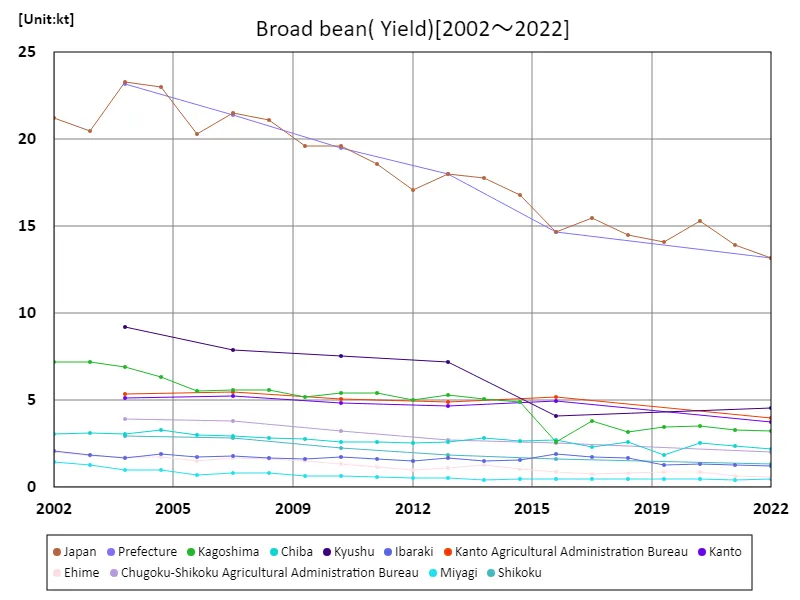

The maximum is 23.3kt[2004] of Japan, and the current value is about 56.7%
Broad bean harvest volume (by prefecture).
Looking at Japan’s fruit vegetable harvest by prefecture in 2022, the largest harvest will be in Kagoshima at 3.23kt. This surpasses the previous record and demonstrates Kagoshima’s status as a center for fruit and vegetable production. On the other hand, there is also a trend towards increased harvests in other prefectures. This suggests that improvements in agricultural technology and investment in agricultural products are widespread. It is also possible that regional differences in climate conditions and soil conditions affect fruit and vegetable production. Furthermore, data from 2022 shows that fruit and vegetable production across Japan is stable and there is sufficient supply to meet demand. In the future, the promotion of sustainable agriculture and responses to climate change will likely become important factors influencing fruit and vegetable production.
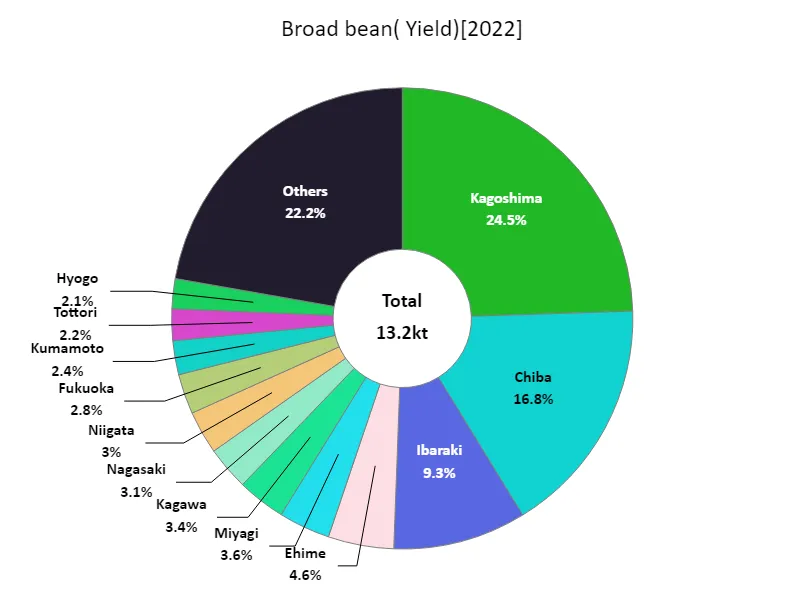

The maximum is 3.23kt of Kagoshima, the average is 307t, and the total is 13.2kt
Broad bean cultivation area (main data).
Looking at data from 2002 to 2022 on the area of fava bean cultivation in Japanese agriculture, the national area peaked at 2.77 kha in 2004, but has since been on a downward trend. By 2022, the total area planted has fallen to 57% of its peak. This trend is likely due to factors such as changes in agricultural structure, fluctuations in demand, and even labor shortages. Other factors that may be contributing to this include the urbanization of farmland and reduced investment in agriculture. However, since fava beans are one of Japan’s traditional food ingredients and demand is not declining, efforts are needed to increase and stabilize the area cultivated with them through the promotion of sustainable agriculture, technological innovation, and support for agricultural workers. In particular, new approaches will be required, such as digitalizing agriculture and strengthening agricultural education.
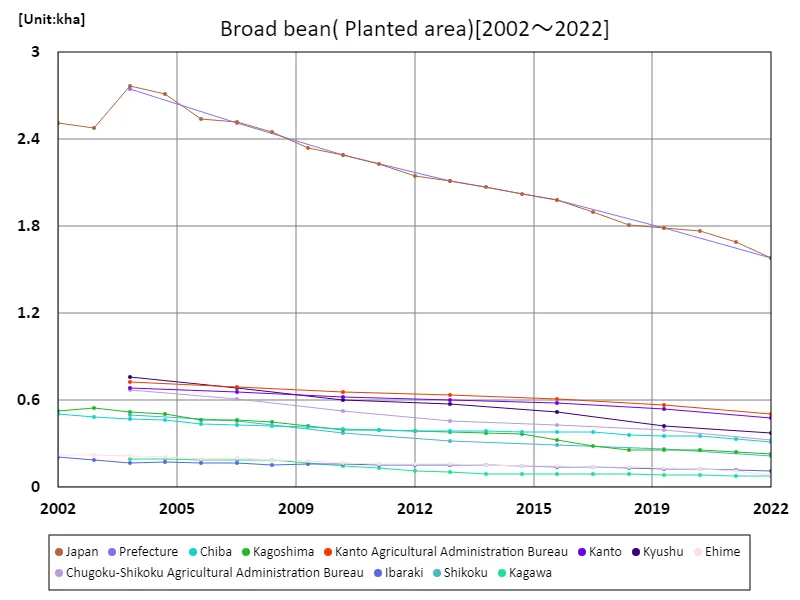

The maximum is 2.77kha[2004] of Japan, and the current value is about 57%
Broad bean cultivation area (by prefecture).
Looking at the area of fruit and vegetable cultivation in Japan by prefecture in 2022, Chiba has the largest area at 313 hectares. This figure exceeds the previous record and demonstrates Chiba’s central role in fruit and vegetable production. As a general trend, differences in climatic conditions and land use from prefecture to prefecture affect the area of cultivated land. For example, in warm regions, fruit vegetables can be produced all year round, so the area cultivated there tends to be relatively large. Advances in agricultural technology and increasing investment in agricultural produce may also be contributing to the expansion of the area under cultivation. Furthermore, data from 2022 suggests that overall fruit and vegetable production is stable, with sufficient supply relative to demand. In the future, the promotion of sustainable agriculture and responses to climate change will likely become important factors influencing the area of fruit and vegetable cultivation.
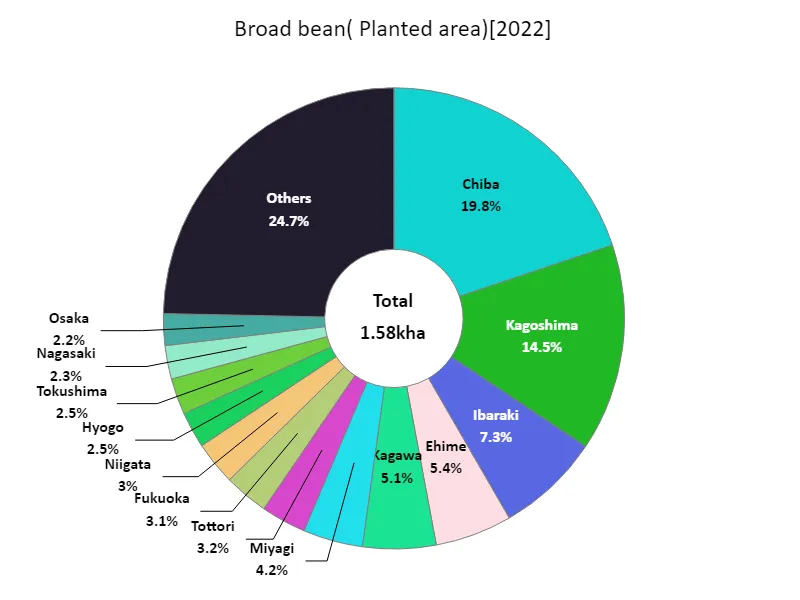

The maximum is 313ha of Chiba, the average is 36.7ha, and the total is 1.58kha
Broad bean shipping volume.
Considering fava bean shipments in Japan in 2022, the largest overall will be in Kagoshima at 2.9kt. The average shipment was 220t, with total shipments reaching 9.47kt. This data shows that Kagoshima is a major producer of broad beans and that its shipping volume stands out nationwide. On the other hand, a certain amount of shipments are also being made to other regions, suggesting that there is demand for fava beans nationwide. Broad beans are a traditional Japanese food ingredient, and this data shows that demand is stable. Also, the average shipping volume of 220 tons suggests that fava beans are produced by farms on a relatively small scale. It is possible that the existence of small-scale farmers in such areas contributes to the local economy and local community. Going forward, the promotion of sustainable agriculture and technological innovation will play an important role in stabilizing broad bean production and shipping volumes while responding to factors such as changes in demand and climate change.
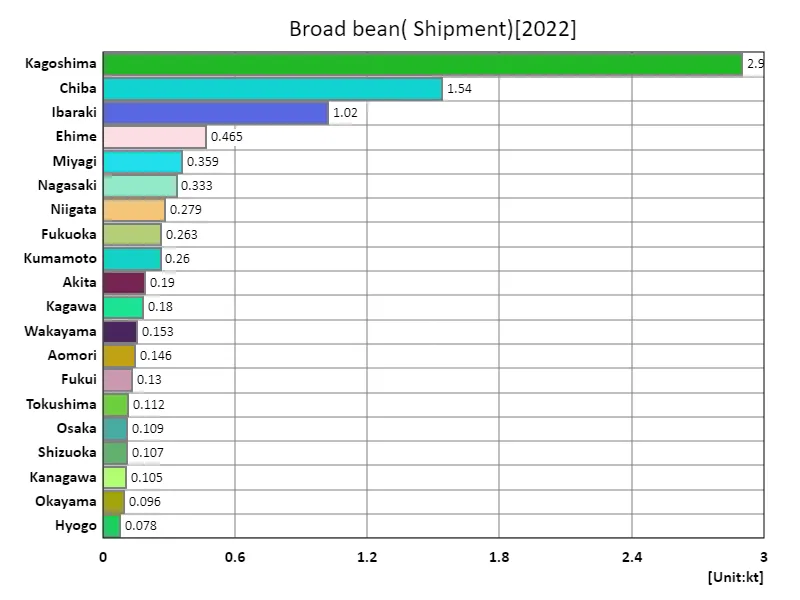

The maximum is 2.9kt of Kagoshima, the average is 220t, and the total is 9.47kt
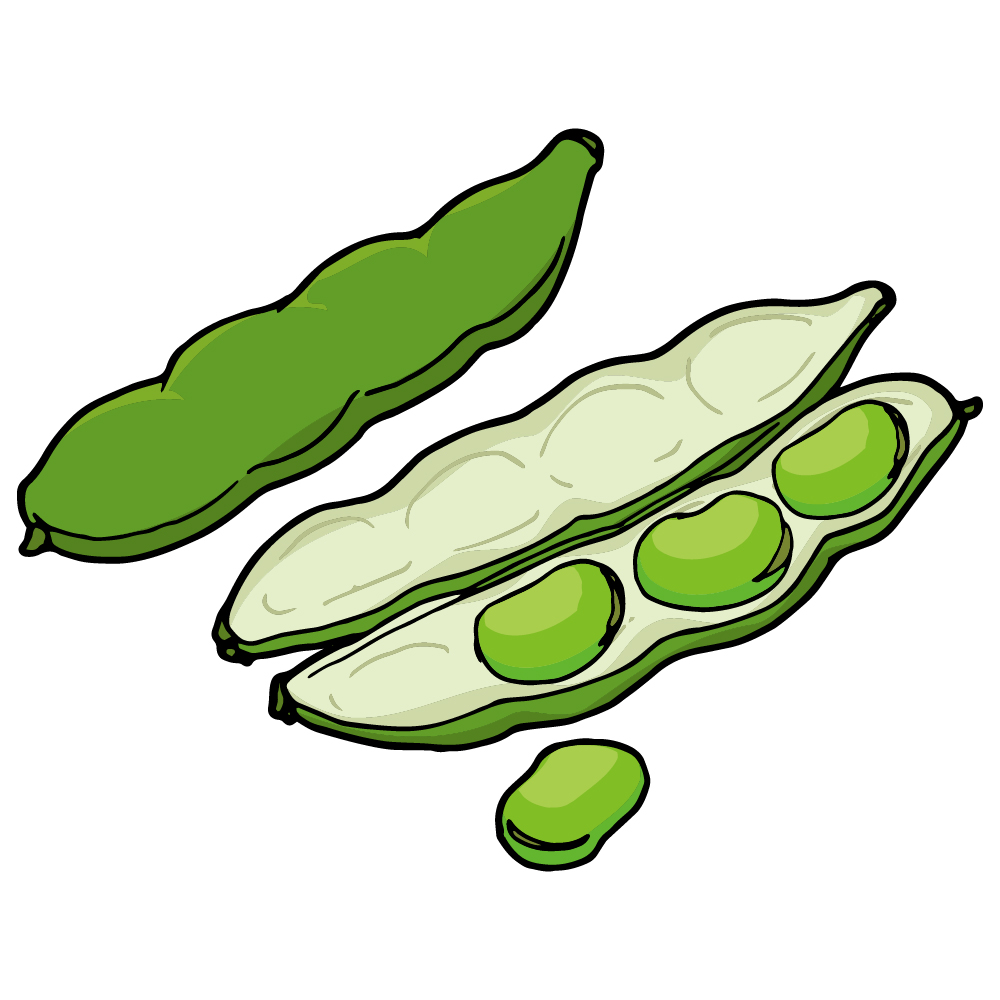


Comments